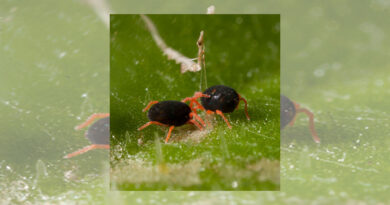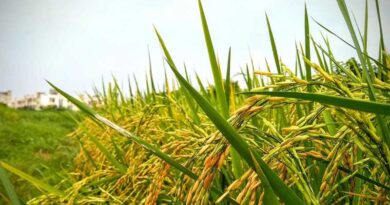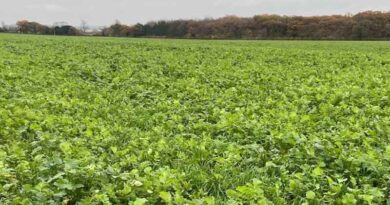Australia: Help track the spread of insecticide-resistant Bluegreen aphids
28 September 2022, AU: Grain growers and agronomists are being asked to help track the insecticide-resistance status of the damaging Bluegreen aphid (BGA) as part of a new crop protection investment.
The research, which is led by Cesar Australia with investment from the Grains Research and Development Corporation (GRDC) and AgriFutures, will help to understand what crop types are most affected by BGA, the spread of resistant strains, and whether resistance levels are increasing.
BGA damage pulses and pasture crops by feeding and spreading harmful plant viruses. Historically, growers have protected crops from this pest by spraying insecticides that control aphids effectively.
However, recent research has identified some BGA populations in South Australia and New South Wales that have evolved resistance to some registered insecticides organophosphates and carbamates that are and routinely used for their control.
Cesar Australia is now calling on growers and agronomists who are dealing with BGA this season to send samples to their laboratories for resistance testing. They are particularly interested in BGA from pulse crops in South Australia and the Riverina area of NSW.
The project’s lead, Cesar Australia research scientist Dr Evatt Chirgwin, says industry help collecting samples would allow the development of regional and seasonal recommendations for effective chemical control of BGA and help prevent future resistance development or spread.
“Understanding the level of insecticide resistance of BGA to specific chemistries across different cropping regions will allow us to provide growers with informed recommendations about chemical use for management and control,” Dr Chirgwin says.
For information on collecting and posting samples email echirgwin@cesaraustralia.com or call 0487 292 556.
Bluegreen aphids can be identified by their grey-green to blue-green colour, oval-shaped body, and long legs. Adults are approximately three millimetres long and are most common in spring and autumn.
Also Read: Wholesale price of garlic in Madhya Pradesh lowest in last three weeks
(For Latest Agriculture News & Updates, follow Krishak Jagat on Google News)















